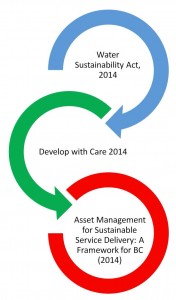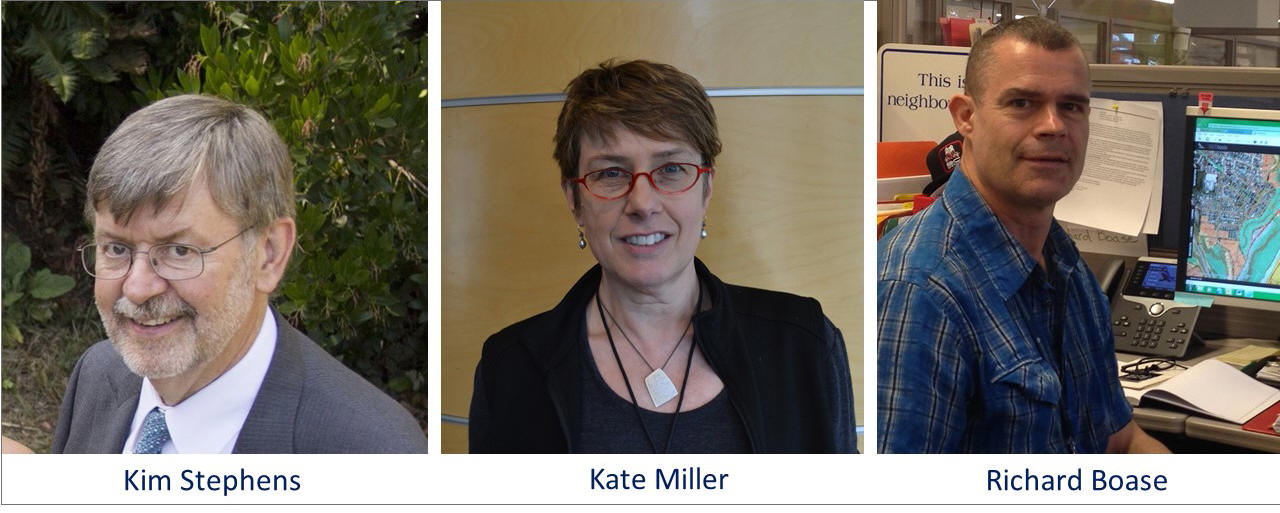FLASHBACK TO 2015: Vision for "Sustainable Watershed Systems, through Asset Management" was first introduced to Asset Management BC audience in newsletter preview story (Sept 2015)
Note to Reader:
Released in September, the Fall 2015 issue of the Asset Management BC Newsletter included an article by the Partnership for Water Sustainability in BC. Co-authored by Kim Stephens (Partnership Executive Director), Kate Miller (Cowichan Valley Regional District) and Richard Boase (District of North Vancouver).
The article introduced the Asset Management BC audience to the then-new concept of Sustainable Watershed Systems, through Asset Management.This article was published in advance of Beyond the Guidebook 2015: Moving Towards “Sustainable Watershed Systems, through Asset Management”, released in November 2015.
The image below provides a concise storyline for the elements comprising Sustainable Watershed Systems. It introduced a new paradigm that changes the way we can think about watersheds.
The New Paradigm: Watershed Systems as Infrastructure Assets
A watershed is an integrated system, is infrastructure, and must be viewed as an asset that provides municipal services. Watershed systems thinking covers the continuum from water supply to drainage, and encompasses human and/or ecosystem needs.
What Happens on the Land Matters!
Where a local government regulates land use, a watershed is an integral part of the drainage infrastructure assets of the local government. More specifically, the three pathways (surface, interflow, groundwater) by which rainfall reaches streams are infrastructure assets. They provide ‘water balance services’. As such, protection and maintenance of the three pathways has financial, level-of-service and life-cycle implications for asset management.
 Released in December 2014, Asset Management for Sustainable Service Delivery: A Framework for BC makes the link between local government services, the infrastructure that supports the delivery of those services, and watershed health.
Released in December 2014, Asset Management for Sustainable Service Delivery: A Framework for BC makes the link between local government services, the infrastructure that supports the delivery of those services, and watershed health.
The article provides context and describes why the BC Framework and two other provincial game-changers are drivers for Sustainable Watershed Systems, through Asset Management. It then introduces the ‘Water OUT= Water IN’ mind-map for looking at the Water Balance differently. Finally, the article enlightens how the Georgia Basin Inter-Regional Educational Initiative (IREI) would facilitate integration of watershed systems thinking and adaptation to a changing climate into asset management.
To Learn More:
To download and read the complete article, click on Feast AND Famine: Moving Towards “Sustainable Watershed Systems, through Asset Management”



